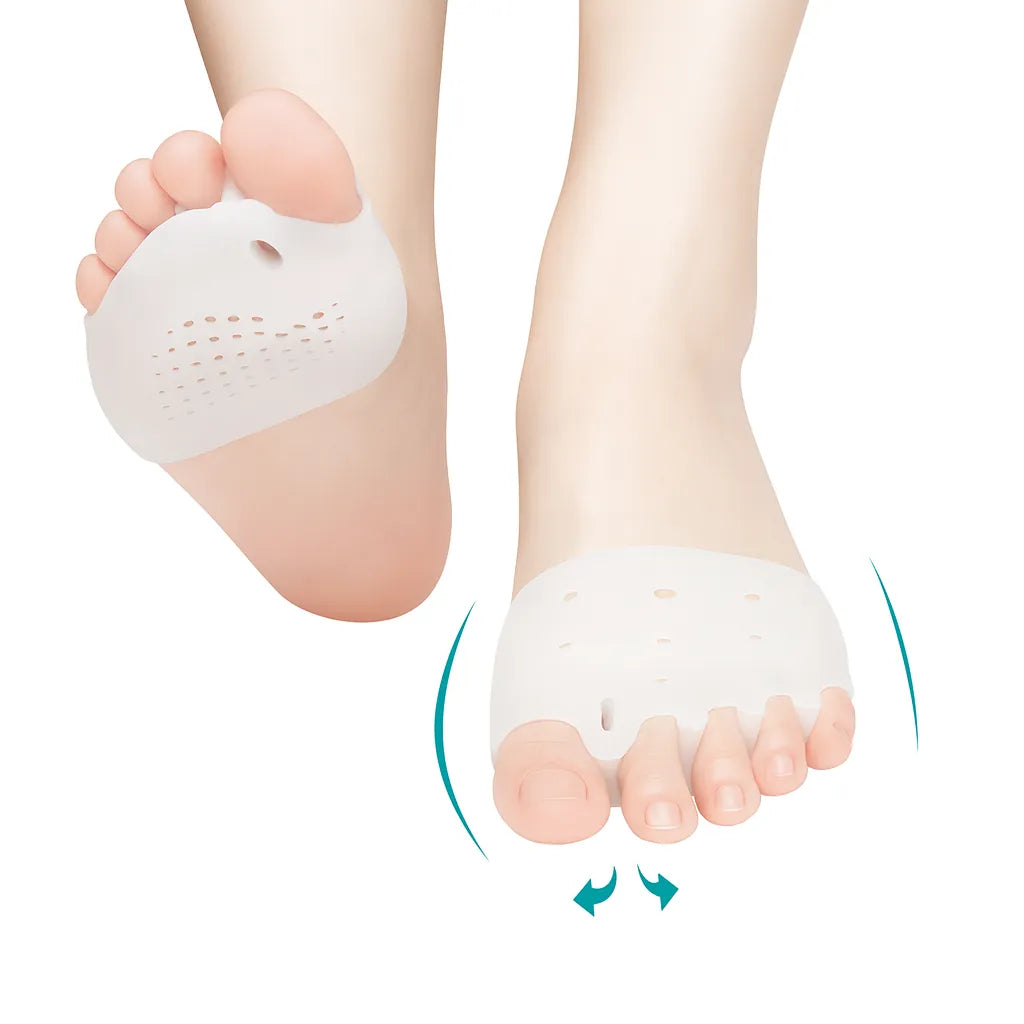
Sharp Pain in Foot: Causes and Solutions
Share
The Prevalence and Impact of Foot Pain
Foot pain, notably a sharp, piercing sensation, is a ubiquitous health concern affecting individuals across the globe. Far from being a minor annoyance, this condition can drastically disrupt daily routines and activities, posing significant challenges to mobility and overall quality of life. Each step becomes a painful reminder of the ailment that lurks beneath, burdening the sufferer with unyielding discomfort. It's estimated that in the United States alone, approximately 75% of the population will experience foot problems at some point in their lives, underlining the commonality and pervasive nature of this issue.

Given the crucial role that our feet play in supporting our body weight and enabling movement, it's no wonder that foot problems can have such a significant impact on people’s health and consequently quality of life. People with foot pain often experience difficulties performing ordinary tasks, such as walking the dog and shopping for groceries or simply getting out of bed in the morning. The pain can affect one's emotional well-being too, leading to feelings of frustration, anxiety, or depression.
Common Symptoms
Foot pain can manifest in various ways depending on many factors including the root cause, the severity of the condition, and the individual's personal pain tolerance. Typically, the discomfort is sharp and intense, often localized to a specific area of the foot. This pain may be accompanied by a host of other symptoms such as swelling, redness, tenderness, stiffness, difficulty walking, and, in some cases, numbness or a tingling sensation. But no always, sometimes pain is the only signal that something is not right.
The pain could be continuous or intermittent, occur at rest or during activity, and could potentially worsen over time or under certain conditions. For instance, individuals with plantar fasciitis often report experiencing sharp pain in the heel when they take their first steps in the morning. Keeping track of these symptoms is essential as they can offer valuable insights into the underlying cause of the discomfort and are very important, in case of need, to refer all the details to your doctor.
Causes of Foot Pain
Foot pain can stem from an assortment of sources. One of the leading causes is injuries, such as sprains, fractures, or strains, which are often the result of trauma, sporting activities, or simply a misstep. Repeated stress or overuse injuries can lead to conditions like plantar fasciitis, an inflammation of the thick band of tissue (the plantar fascia) that stretches across the bottom of the foot, connecting the heel bone to the toes, or Achilles tendinitis, an issue affecting the tendon that connects the calf muscles to the heel and is very incapacitant.
Structural abnormalities or biomechanical issues, such as flat feet or high arches, can also trigger foot pain. Furthermore, systemic diseases can contribute to foot discomfort. These include diabetes, which can cause peripheral neuropathy (nerve damage in the feet), and gout, a form of arthritis characterized by severe pain, redness, and tenderness in the joints, most commonly the big toe.
Key Risk Factors for Foot Pain
Certain lifestyle factors and health conditions can predispose individuals to foot pain. Risk factors include obesity, which places additional stress on the foot structures, and aging, often associated with degenerative changes in the feet due to wear and tear over the years.
Those who spend long hours standing, particularly on hard surfaces, are more prone to developing foot pain, as are individuals who wear ill-fitting or inappropriate footwear. High-impact sports such as running, basketball, and soccer also increase the risk, given the repetitive stress these activities place on the body. Certain professions like nursing, teaching, or construction work, which involve substantial amounts of standing or walking, are similarly associated with a higher risk of foot pain and other health issues.
Possible Solutions
Treatment strategies for foot pain vary widely and are largely dependent on the underlying cause of the pain and also the approach followed by your doctor, after a careful and deep evaluation.
Conservative measures include rest, ice application, compression, and elevation (known collectively as the RICE protocol), which can alleviate symptoms related to sprains or strains.
Over-the-counter pain relievers and nonsteroidal anti-inflammatory drugs can also be helpful in managing pain and inflammation, although they don’t solve the problem for themselves just ease the pain and are not a first-line treatment.
Another type of approach more focused on the cause like Physical therapy, designed to strengthen foot and lower leg muscles, improve flexibility, and correct gait abnormalities, can be highly effective for conditions like plantar fasciitis and Achilles tendinitis. Orthotic devices, such as shoe insoles, braces, or splints, can provide crucial support, help distribute pressure evenly across the foot, and correct structural or biomechanical issues.
When any of the other approaches fail, surgery should be taken into consideration. In more severe cases, surgical intervention could include procedures to repair fractures, correct severe structural abnormalities, or address stubborn cases of plantar fasciitis that haven't responded to conservative treatment measures.
When to See a Doctor
While mild foot pain can often be managed at home, it's important to seek medical attention if the pain is severe, persists for more than a few days, or is accompanied by signs of infection such as increased redness, warmth, swelling, or if you have a fever. Early diagnosis and appropriate treatment can prevent the condition from worsening, mitigate the risk of long-term damage, and facilitate a faster and more effective recovery. So it’s crucial to see your doctor if any of the following are perceived.
Conclusion
Sharp foot pain can be a debilitating condition that significantly impacts an individual's mobility and quality of life. Armed with a comprehensive understanding of the potential causes, risk factors, and treatment options, one is better equipped to manage this common health concern. As with many health-related issues, prevention is paramount – maintaining a healthy lifestyle, wearing appropriate footwear, and seeking timely medical advice can go a long way in keeping foot pain at bay.
Author Bio

Marlene Carvalho
Certified Sports Physiotherapist of Elite and Olympic athletes; Performance Coach to racing drivers
Marlene Carvalho is a sports physiotherapist passionate about all things sports.
References
- American Podiatric Medical Association. (2020). Foot Pain.
- Centers for Disease Control and Prevention. (2018). Arthritis-Related Statistics.
- National Institute of Neurological Disorders and Stroke. (2019). Peripheral Neuropathy Fact Sheet.
- OrthoInfo. (2018). Plantar Fasciitis and Bone Spurs.













